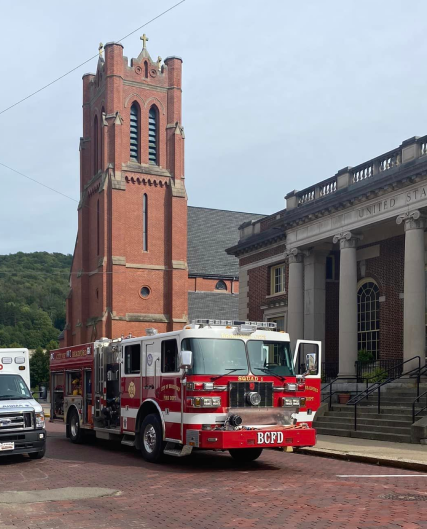About the City of Bradford Fire Department
The City of Bradford Fire Department is an all-career department that has been proudly serving its residents for over 100 years. The City of Bradford Fire Department operates out of two fire stations. Besides providing emergency and non-emergency response to all hazards within the city limits, The City of Bradford Fire Department also provides ALS level ambulance service to the City of Bradford and its neighboring townships.
The City of Bradford Fire Department is an all-career department that has been proudly serving its residents for over 100 years. The City of Bradford Fire Department operates out of two fire stations. Besides providing emergency and non-emergency response to all hazards within the city limits, The City of Bradford Fire Department also provides ALS level ambulance service to the City of Bradford and its neighboring townships.
The City of Bradford Fire Department is rated ISO Class 3.
In 2022, The City of Bradford Fire Department responded to a total of 371 fire related calls, and 2423 EMS Calls.
Fire Safety
Make a plan to keep your family safe from fire. Always be aware of the dangers in your home. Include your entire household in preparing an escape plan. The National Fire Protection Association (NFPA). Click here to see their website that contains additional information and resources.
Contact Bradford City Fire Department
Address:
Bradford City Fire Department
25 Chestnut St.
Bradford, PA 16701

 Savvy Citizen
Savvy Citizen
 FAQs
FAQs

